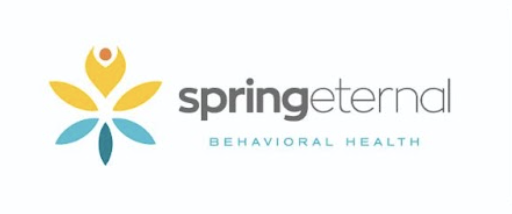Some physical and behavioral health disparities disproportionately affect the 2SLGBTQAI+ community. Did you know that:
12.5% of gay, lesbian, and bisexual students report staying home from school due to safety concerns (compared to 4.6% of heterosexual students)
60.4% of gay, lesbian, and bisexual students report feeling consistently sad or hopeless for at least two weeks in a row (compared to 26.4% of heterosexual students)
Gay, lesbian, bisexual, and orientation-uncertain students report substance use at higher rates and earlier in life than heterosexual students
50% of transgender people report teaching their healthcare providers about transgender identity, while 45.7% report discrimination in healthcare settings
Did you know:
Q: What does 2SLGBTQAI+ stand for?
A: 2SLGBTQAI+ is an acronym that encompasses many sexualities, romantic orientations, and gender identities.
2S stands for two-spirit. SAMHSA defines two-spirit as “a contemporary term that references historical multiple-gender traditions in many First Nations cultures…[and] in many Nations, two-spirit status carries great respect and leads to additional commitments and responsibilities to one’s community.”
L stands for lesbian. SAMHSA defines lesbian as “a woman who self-identifies as having an emotional, sexual, and/or relational attraction to other women.” Some nonbinary, transmasculine, and gender-nonconforming individuals may also identify as lesbian.
G stands for gay. SAMHSA defines gay as “a man who self-identifies as having an emotional, sexual, and/or relational attraction to other men.” Some also use gay as an umbrella term encompassing a variety of queer sexualities and romantic orientations.
B stands for bisexual. SAMHSA defines bisexual as “a person who self-identifies as having an emotional, sexual, and/or relational attraction to men and women,” and some bisexual people may be attracted to many kinds of people along the gender spectrum.
T stands for transgender or transsexual. The National LGBT Health Education Center defines transgender as “individuals who have a gender identity not fully congruent with their assigned sex at birth” and transsexual as “a medical term used to describe a subset of transgender individuals who have transitioned to the opposite sex, often including sexual reassignment surgery.”
Q stands for queer. SAMHSA defines queer as “A term usually used to refer to specific sexual orientations (e.g., lesbian, gay, bisexual)…however, depending on the user, the term can have either a derogatory or an affirming connotation.”
A stands for asexual or aromantic. Someone who is asexual may not experience sexual attraction with the same intensity or as frequently as expected in their culture (if at all), and asexual people may be sex-favorable, sex-neutral, or sex-repulsed. Similarly, someone who is aromantic may not experience romantic attraction with the same intensity or as frequently as expected in their culture (if at all) and may be relationship-favorable, relationship-neutral, or relationship-repulsed.
I stands for intersex. Planned Parenthood defines intersex as “a general term used for a variety of situations in which a person is born with reproductive or sexual anatomy that doesn’t fit the boxes of ‘female’ or ‘male.’”
The + at the end of the acronym signifies that there are infinitely more gender identities, sexualities, and romantic orientations than can be included within a simple acronym. This can include pansexuality and panromantic attraction, polyamory and ethical non-monogamy, nonbinary gender identities, studs, butches, kothi, hijra, and many more!
Q: What resources do I have as a 2SLGBTQAI+ person?
A: Here are some organizations in Oklahoma and other parts of the United States that can assist with shelter, clothing, legal support, STI testing, transitional healthcare, and more
In Oklahoma:
Nationally:
Other Resources:
Q: How can I better support 2SLGBTQAI+ people in my life?
A: Many 2SLGBTQAI+ people experience rejection from their families, leading to poor mental health outcomes. One of the best things you can do to support your 2SLGBTQAI+ loved ones is to support and accept every part of them.
If you don’t know where to begin, here are some resources:
US Department of Education Fact Sheet for Supporting Intersex Students
US Department of Education Fact Sheet for Supporting Transgender Youth in School
US Department of Education Fact Sheet for Confronting Anti-LGBTQI+ Harassment in Schools
Hotlines:
BlackLine: 1-800-604-5841
Crisis Text Line: Text HOME to 741741
Desi LGBTQ+ Helpline for South Asians: 908-367-3374 (available Thursdays and Sundays 7:00-9:00 PM Central)
GLBT National Youth Talkline: (800) 246-7743
Peer-Run Warmline (non-emergency): 855-845-7415
Sex, Gender, and Relationships Hotline: 415-989-7374 (typically available Monday through Friday 10:00 AM - 7:00 PM Central)
StrongHearts Native Helpline: 1-844-762-8483
The Trevor Project: 1-866-488-7386
References:
https://www.cdc.gov/mmwr/volumes/65/ss/ss6509a1.htm
https://store.samhsa.gov/sites/default/files/d7/priv/sma12-4684.pdf
https://lgbtqiahealtheducation.org/wp-content/uploads/Sari-slides_final1.pdf
https://www.plannedparenthood.org/learn/gender-identity/sex-gender-identity/whats-intersex
https://nccc.georgetown.edu/documents/LGBT_Brief.pdf
Questions about 2SLGBTQAI+ Identity & Resources:
If you’re here, you’re not alone. At Spring Eternal, our 2SLGBTQAI+ and allied staff and trainees are happy to help you explore your identity, access affirming resources, manage relationships, or cope with the same things that affect us all. You can schedule an appointment with us online or by phone (405) 601-4565
Spring Eternal is here to support you and your loved ones, no exclusions.

